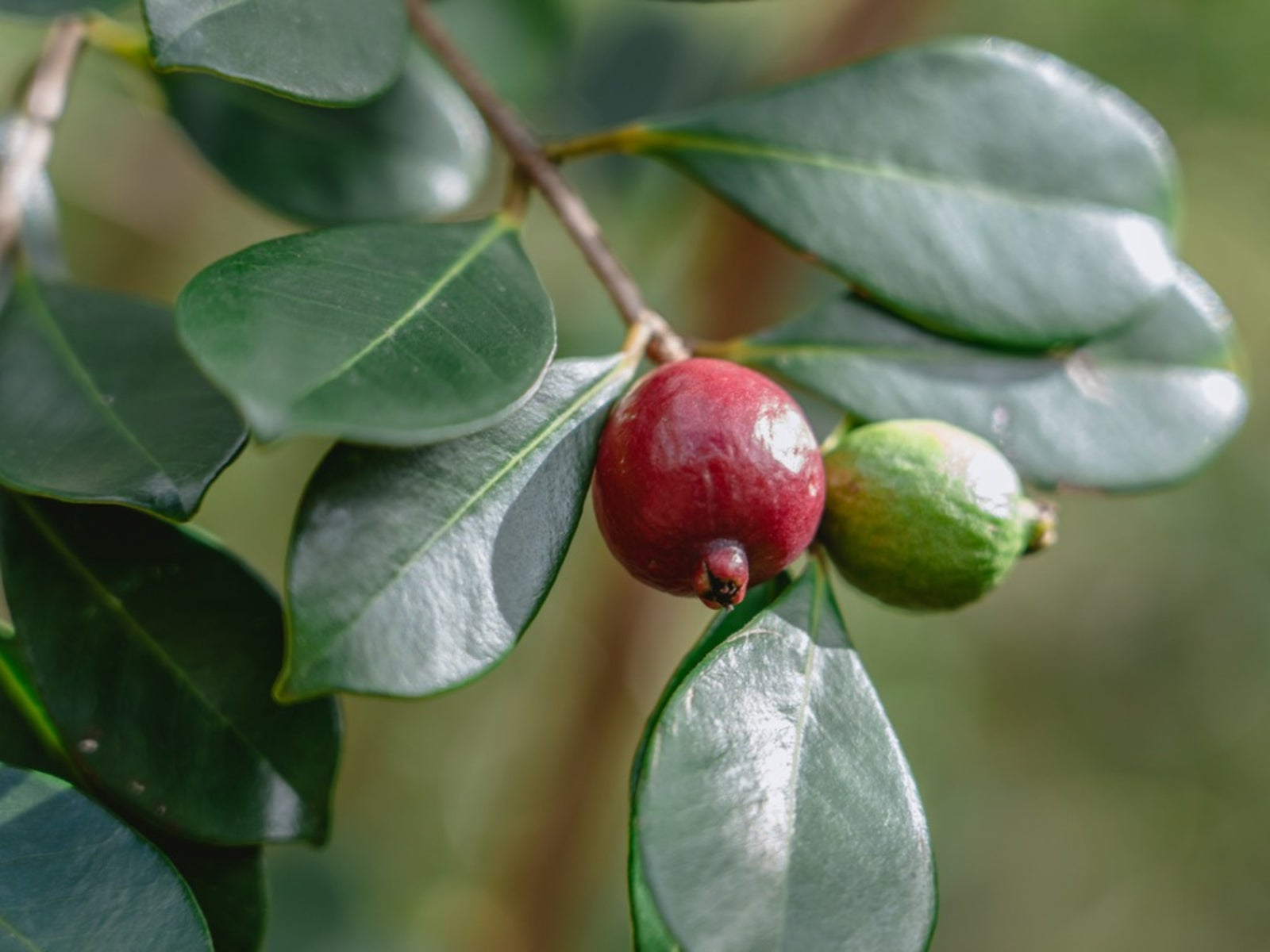Strawberry Guava Plants: How To Grow A Strawberry Guava Tree


Strawberry guava is a large shrub or small tree that is native to South America and loves a warm climate. There are some good reasons to choose strawberry guava plants over the common guava, including more attractive fruit and foliage, and a better tasting tropical fruit. Read on to learn more about strawberry guava care.
What is Strawberry Guava?
Strawberry guava (Psidium littoralei) is also known as cattley guava, purple guava, or Chinese guava, although it is native to the Americas. Strawberry guava generally grows to heights between 6 and 14 feet (2-4.5 m.), although they can grow taller. As the name suggests, this tree usually produces red fruit, but yellow fruits are also possible. The fruit on the strawberry guava is similar to that of the common guava: a fragrant, juicy pulp with seeds. However, the flavor of this type of guava is said to have a strawberry essence and is considered to be less musky. It can be eaten fresh or used to make puree, juice, jam, or jelly.
How to Grow a Strawberry Guava Tree
Another advantage over the common guava is that strawberry guava care is generally easier. This tree is hardier and will tolerate more difficult conditions than common guava. Although it prefers a warmer climate, the strawberry guava will remain hardy down to temperatures as low as 22 degrees Fahrenheit (-5 C.). It does best in full sun. When growing a strawberry guava tree, soil considerations are not too important. It will tolerate poor soils that other fruit trees will not, including limestone soils. If you do have poor soil, your tree may need more watering to produce fruit. The strawberry guava tree that produces red fruit is also very drought tolerant, while the yellow fruit producing tree can take occasional flooding. These trees are generally considered pest and disease free. The fruit from strawberry guava plants is tasty but delicate. If you are growing this tree to enjoy the fruits, be sure to use right away when ripe. Alternatively, you can process the fruit to store as a puree or in another form. The fresh fruit will not last more than two or three days. NOTE: Strawberry guava is known to be problematic in some areas, such as Hawaii. Before planting anything in your garden, it is always important to check if a plant is invasive in your particular area. Your local extension office can help with this.
Gardening tips, videos, info and more delivered right to your inbox!
Sign up for the Gardening Know How newsletter today and receive a free copy of our e-book "How to Grow Delicious Tomatoes".

Mary Ellen Ellis has been gardening for over 20 years. With degrees in Chemistry and Biology, Mary Ellen's specialties are flowers, native plants, and herbs.
-
 Looking For Plants To Give You The Soft And Fuzzies? Try These 5 Fuzzy Leaf Plant Options
Looking For Plants To Give You The Soft And Fuzzies? Try These 5 Fuzzy Leaf Plant OptionsLovers of texture, drama, silver foliage and tactile plants will adore these special sensory garden additions. These fuzzy leaf plant options will leave you all aglow
By Susan Albert
-
 Get Ready For A Summer Of Hummers! Grow These Full Sun Hummingbird Plants and Flowers
Get Ready For A Summer Of Hummers! Grow These Full Sun Hummingbird Plants and FlowersIf you’re lucky enough to enjoy a sunny backyard, make sure you are maxing out on your pollinator opportunities and grow these full sun hummingbird plants and flowers
By Tonya Barnett